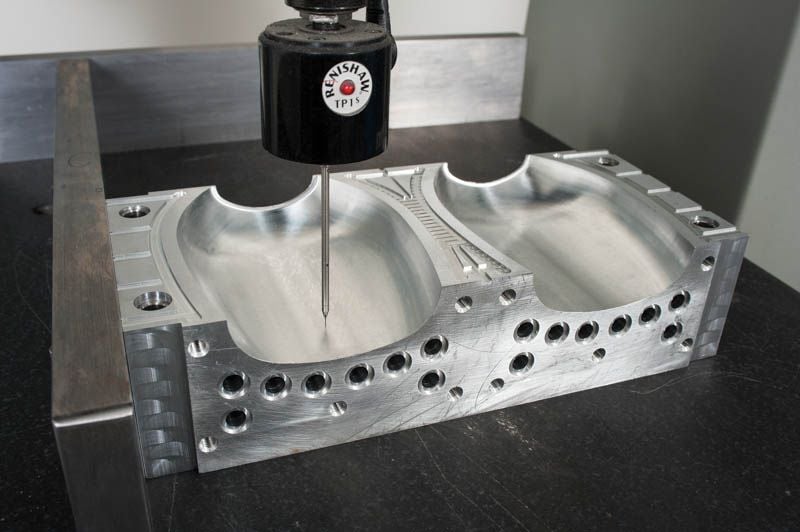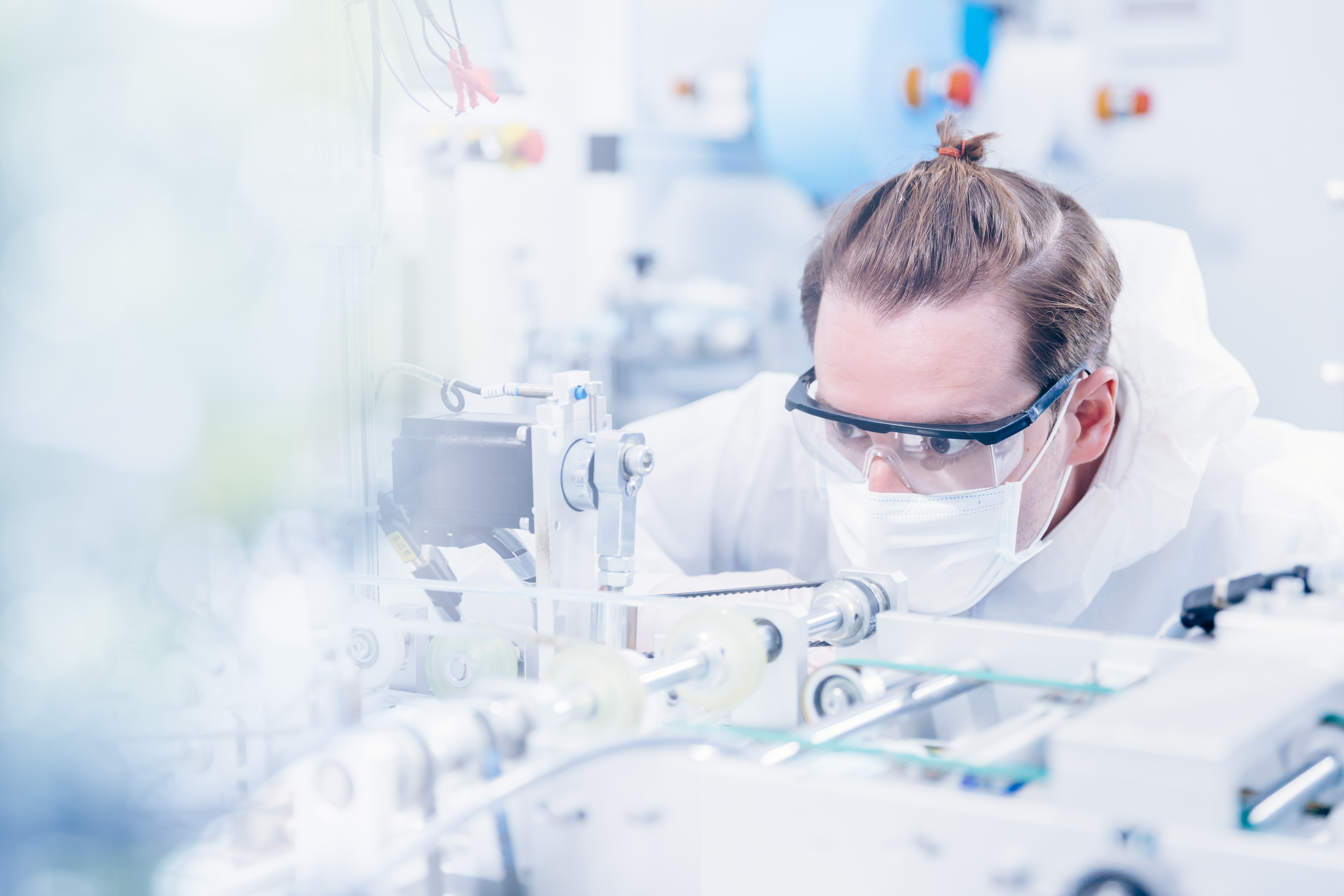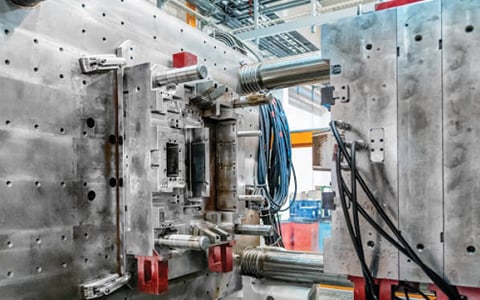The decision between Metal Injection Molding and Die Casting mainly depends on the circumstances. While one appears to be the better choice, the other has advantages. As a result, you should thoroughly research both capabilities and limits before deciding, especially when both methods have a wide range of applications that are distinct from one another
Are you able to distinguish between Metal Injection Molding and Die Casting?
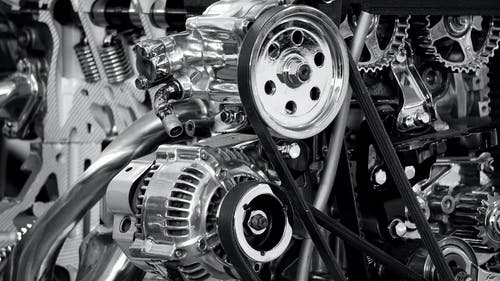
Don’t worry; we’ve put together a quick review of the procedures to help you decide which option is best. May the information in this post assist you in selecting what is best for you. To begin, familiarize yourself with Die Casting and Metal Injection Molding to determine which of the two you prefer.
What is Metal Injection Molding?
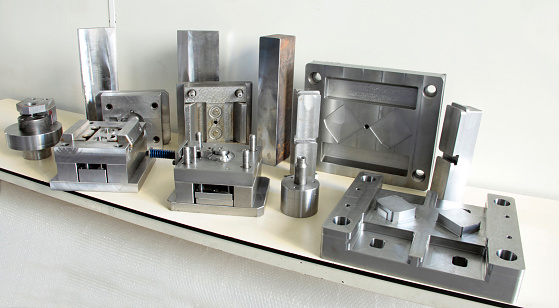
Metal Injection Molding is a net shape technology for shaping and sintering metal powder into solid components. It is a cost-effective method for parts that require a high level of strength and wear resistance that other methods cannot attain.
While MIM and die casting involve pouring metal into a die, the similarities end there. When applied to the appropriate scenario and component, break casting offers a variety of economic benefits that can result in significant cost savings for the component designer.
What is Die Casting?
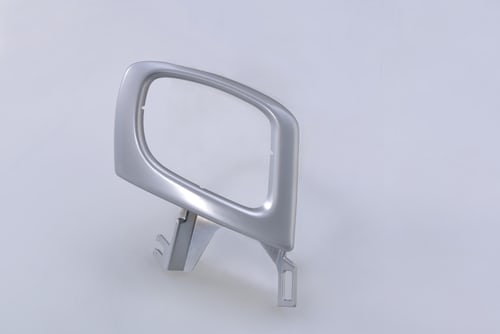
The die casting process uses a mold to form the metal part, unlike metal injection molding. Two pieces of metal are joined together to create a cavity in a die. Molten metal is poured into the hole. After the metal cools, it is ejected from the die using a machine called a shot-peening machine. The process requires the use of a mold that is made of either steel or aluminum.
Die casting is one of the most commonly used processes for small to large castings. The process is ideal for low to medium production runs. The video below shows how a die casting machine makes a small aluminum part.
Metal Injection Molding vs. Die Casting: The Process
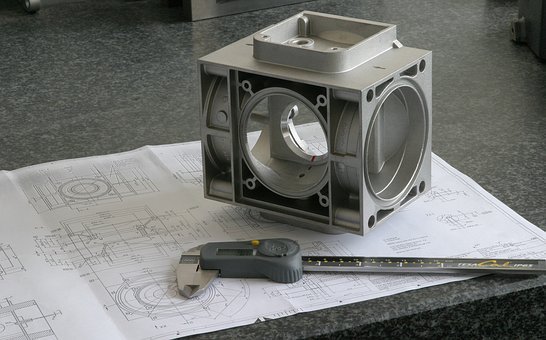
The main difference between Metal Injection Molding and Die Casting is the removal of flash. In a die casting machine, the flash is pulled away from the part using a shot-peening machine. The flash is removed from the part in a MIM machine using a process called burnout. The burnout process involves burning.
- Metal Injection Molding (MIM) Process
In the MIM process, a thermally-treated molding bar is placed in a machine. Typically, the engine is electrically or hydraulically driven. The molding bar is then injected with a precise amount of metal powder.
The metal powder flows into the mold cavities and creates a solidified mass. The parts are then sintered. Sintering is an intense heating process that causes the metal powder to fuse together. The process is used to melt the powdered metal and to remove the porosity that would exist if the powder was simply mixed together and heated. The combined process results in a specific metal part that has maximum strength.
The process requires precise injection and burnout operating parameters. This is due to the precision of the machine tools and controls. In addition, the process requires precise metallurgical control in order to achieve the desired properties of the final part.
In addition to the precision required of the MIM process, the functional performance of the MIM part is also critical. This is especially true when the part is needed to perform in high-temperature applications. The MIM part must have the right combination of mechanical, thermal, and metallurgical properties.
- Die Casting Process
The die casting process is a commonly used process in the manufacturing of many high-quality components. Although the process is not limited to cosmetic applications, it is frequently used to produce aesthetic parts such as valves, small pumps, and brakes.
A die casting machine is used to create a mold that is used to produce the desired part. The mold is made of steel or aluminum casting. The mold is placed into the die casting machine. The machine is used to inject molten metal into the mold. After the metal cools, it is ejected from the die. This ejection from the die creates a part that is ready to be used.
The die casting process is ideal for low to medium-volume production. The process is perfect for applications that require a variety of alloys. In addition, die casting is a net shape forming process that has relatively few limitations.
Die casting is a quick process. Die casting produces tight tolerances, which can be a benefit or a drawback depending on the application.
Metal Injection Molding vs. Die Casting: Applications
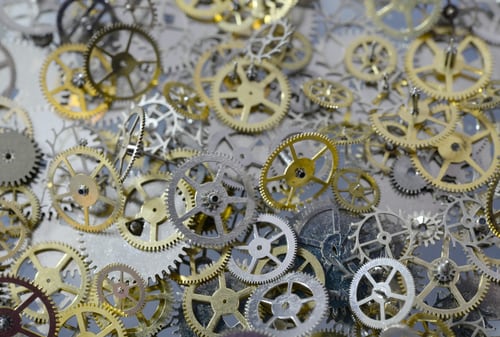
Both Metal Injection Molding (MIM) and Die Casting have a wide range of applications. Both processes are commonly used to manufacture a variety of components. These applications include:
As you can see, both MIM and die casting are ideal processes for a variety of applications. Both approaches have their own benefits and limitations. To determine which method is best, it is essential to analyze which procedure is best for the specific application. This analysis will require a deep understanding of the process’s capabilities and limitations. The next step is to determine whether the process is applicable to your particular application.
- Die Casting Applications
Die casting applications include decorative and structural components. The process is ideal for both aesthetic and functional components. Key applications of die casting include:
The main advantage of die casting is its ability to create small and complex parts. It is also ideal for high-volume applications. The process is perfect for applications that require a variety of alloys. The small size of die casting machines allows them to be placed just about anywhere. Die casting machines are also used to manufacture high-quality, precision components that require high tolerances.
Although die casting has a wide range of applications, it is not ideal for every application. It is not suitable for applications that require large quantities of components. The process is not suitable for applications that require complex parts.
Die casting produces a brittle component. The process is limited by the thermal and mechanical properties of the casting alloy. In some applications, breakable parts are acceptable. Other applications require high-strength, ductile parts. When the properties of the component are not met, the part will not be able to withstand wear and tear.
Castings are typically used in applications that require a part that has excellent wear resistance but less than desirable strength. The process is used to manufacture many parts that have excellent corrosion resistance. Castings are also available in a variety of alloys that are ideal for specific applications.
- MIM Parts Applications
Metal Injection Molding (MIM) is an ideal process when strength and wear resistance are the top priorities. MIM is the best process to use when the strength and wear resistance of the part is critical to the application. MIM is ideal for pieces that are designed to be used in applications with extreme conditions. The process is suitable for applications that require a complex part that has fine surface detail. MIM is also ideal for applications that require complex geometry.
MIM is used to create a wide range of components. The process is ideal for applications that require small and large components. The process is perfect for applications that require both aesthetic and functional parts. MIM is ideal for applications that require low to medium production volumes.
The main advantages of MIM are its ability to create a wide range of parts and its ability to create small components. The process is also ideal for applications that require high strength and wear resistance.
MIM vs. Die Casting: Materials
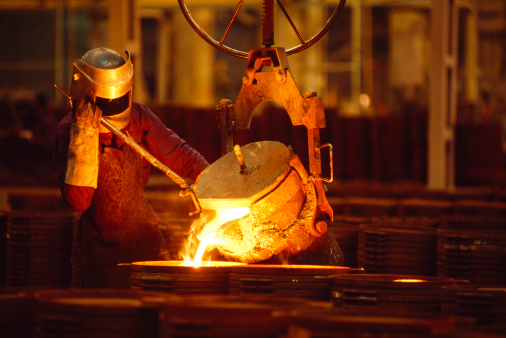
The main difference between Metal Injection Molding (MIM) and Die Casting is the strength of the parts. The strength of the part depends on the material and the application. The strength of the part will determine if the part can withstand the stresses and temperatures associated with the application. Materials should be as clean as possible when it is manufactured, that’s why most companies put much attention to clean room injection manufacturers to secure the sterility of the material.
In the MIM process, the molten metal is forced into a mold that contains powdered metal. The powdered metal is heated until it melts. The molten metal is then allowed to cool, which results in a part that has maximum strength. The strength of the part is determined by the material, and the alloy was chosen.
The strength of MIM parts is often based on their tensile strength. Tensile strength is the measure of a material’s ability to withstand tensile stress. There are two other measures of strength that are based on strain or elastic deformation. These measures yield strength and elongation. Yield strength is the measure of the amount of strain that takes place before permanent deformation occurs. Elongation is the measure of the amount of strain that is present when the stress is removed.
There are thousands of materials used in the MIM process. In the MIM process, there are several processes that are used to produce MIM parts. In this process, powdered metal and liquid metal are mixed together. A mold that is made by a high quality plastic material selection is then filled with this mixture, which results in a part.
The mold that is used in the MIM process is made of a variety of materials. Injection Molding Tool Design is the most common process used for the mold. Injection molding is used to create the mold that contains powdered metal. After the part is formed, it is ejected from the mold.
MIM vs. Die Casting: Parameters Comparison
This part of the blog will tackle the main parameters that are used to compare the MIM and Die Casting Process.
- High Dimensional Tolerance
The MIM process is typically much less accurate than the tolerance of the die casting process.
The main difference between the MIM and die casting processes is the dimensional tolerances. The dimensional tolerances of the MIM process are typically much less accurate than die casting. The dimensional tolerances of the MIM process are typically much more relaxed than die casting.
The tolerance of the MIM process is typically ±0.002″ (High). In comparison, the tolerance of the die casting process is typically ±0.0005″ (Medium). This is a 15-fold difference.
- Complex Geometries
The MIM process is also much more difficult to form complex (High) geometries. In the MIM process, the complexity of the geometry is limited by the mold. The mold prevents the molten metal from flowing into the part. This can result in a complex form that is not perfect.
In the die casting process, this is much easier. The intricate geometry of the die casting process results in a complex form that is uniform (Medium).
- Wall Thickness
The wall thickness of the MIM process is typically very uniform (High). In the MIM process, the thickness of the part can vary depending on the mold. The mold is used to form the part. The variation of the thickness of the part depends on the thickness of the mold. This can result in parts that have a uniform wall thickness.
In the die casting process, the variation of the wall thickness is much larger. The thickness of the part is affected by the mold, the material being injected, and the amount of metal injected. The thickness of the part can vary from the manufacturer. This causes the wall thickness of the part to be inconsistent, which results in parts that do not have uniform wall thickness.
- Size & Weight
The size and weight of the MIM process are typically very large. The size and weight are limited by the size of the die and the size of the machine.
The size and weight of the die casting process are typically very small. The size and weight of the part depend on the size of the die and the size of the machine. The size of the die and the machine are typically much smaller than the MIM process.
- Density
The density of the MIM process is typically very low. The density is determined by the amount of metal injected and the type of powder that is used. The amount of metal injected is typically large, which results in low density.
The density of the die casting process is typically very high. The density is determined by the type of metal that is being injected. The density of the component is typically high because the amount of metal is small.
- Mold Lifespan
The lifespan of the MIM process is typically very long (High). In the MIM process, the mold is typically used to form a single part. The mold is destroyed when the part is ejected. The mold is replaced when the part is ejected. The lifespan of the mold is typically longer than a die casting mold.
The lifespan of the die casting mold is typically short (Low). In the die casting process, the mold is used to form hundreds of components. The mold is typically destroyed after 100-200 pieces are formed. The lifespan of the mold is typically much shorter than MIM mold.
- Product Shrinkage
The product shrinkage of the MIM process is typically very small (Low). The product shrinkage is caused by the volume of the metal that is injected. The volume of metal that is injected is typically very small, which results in small shrinkage.
The product shrinkage of the die casting process is typically high. The product shrinkage is caused by the volume of the metal that is injected. The volume of metal that is injected is typically larger than the MIM process. The shrinkage is typically large because the volume of metal is large.
- Physical Properties
The physical properties of the MIM process are typically very high. In the MIM process’ physical quantities vary according to the material, alloy, and geometry of the part. The part’s strength is crucial to its function. The part’s strength is determined by the material and the alloy’s strength.
The physical properties of the die casting process are typically very low. Physical properties of the die casting process can vary depending on the material, the alloy, and the geometry of the part. The strength of the part is critical to the function of the part. The part’s strength is determined by the material and the alloy’s strength.
- Mechanical Strength
The mechanical strength of the MIM process is typically very high. The mechanical strength of the MIM process is based on the strength of the alloy that is used. The mechanical strength is determined by the material of the part and the strength of the alloy.
The mechanical strength of the die casting process is typically very high (High). The mechanical strength of die casting is also based on the strength of the alloy that is used. The mechanical strength is determined by the material of the part and the strength of the alloy.
- Surface Finish
The surface finish of the MIM process is typically very high (High). In the MIM process, the surface finish is typically determined by the material and the alloy used. The surface finish can also be affected by the mold, which is used to create the part. If the mold is not polished, then the surface finish of the part is typically not very smooth.
The surface finish of the die casting process is typically very low (Medium). In the die casting process, the surface finish is also determined by the material and the alloy used. A polished mold is typically used in the die casting process, which results in a much smoother surface finish.
- Post-operation Feasibility
Post-operational feasibility depends on the material and the geometry of the part. Depending on the material and the geometry of a part, post-operational feasibility can differ.
In the MIM process, post-operational feasibility is typically very high. In the MIM process, the post-operational feasibility is typically determined by the material and the geometry of the part. The post-operational feasibility can also be affected by the application of the part.
In the die casting process, post-operational feasibility is typically medium. In the die casting process, the post-operational feasibility is typically determined by the material and the geometry of the part. The post-operational feasibility can also be affected by the application of the part.
- Material Ranges
Material ranges that are used in the MIM process are typically much broader (High) than the die casting process. Material ranges can vary depending on the alloy and the geometry of the part.
The material ranges of the die casting process are typically much narrower (Medium) than the MIM process. Material ranges can vary depending on the alloy and the geometry of the part.
- Design Flexibility
The design flexibility of the MIM process is typically very flexible (High). The design flexibility of the MIM process can vary depending on the application or the geometry of the part. The design flexibility is typically very versatile.
The design flexibility of the die casting process is typically very limited (Medium). The design flexibility of the die casting process can vary depending on the application or the geometry of the part. The design flexibility can also be affected by the manufacturing process.
- Miniaturization
The miniaturization of the MIM process is typically very small (Low). The miniaturization of the MIM process is based on the geometry of the part. The miniaturization of the part is affected by the geometry of the component. Miniaturization is typically limited because the geometry of the part is limited by the mold.
In the die casting process, the miniaturization of the component is typically very small (Low). The miniaturization of the component is based on the geometry of the part.
- Capacity
The capacity of the MIM process is typically very high (High). In the MIM process, the capacity of the process is typically determined by the size of the machine or the size of the die. The capacity is typically limited by the size of the machine or the size of the die.
In the die casting process, the capacity of the machine is typically very large (Mega). The capacity of the machine can vary depending on the size of the die and the size of the machine. The capacity of the machine is typically limited by the size of the die and the size of the machine.
Metal Injection Molding vs. Die Casting: Advantages & Disadvantages
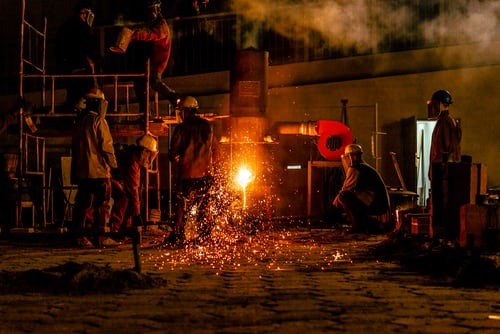
In this section, let us dig deeper into the advantages and disadvantages of both processes. In addition, we will take a closer look at the advantages and disadvantages of each process. The comparisons that we make in this section will be based on our experience of working with both processes.
- Metal Injection Molding Advantages
The advantages of the process are that the part has excellent wear resistance. However, it is not as strong as a die-cast part. The process has excellent thermal stability, which makes it ideal for applications where the part will be used at a high temperature. The process has excellent corrosion resistance. The process is ideal for applications that require a high temperature-resistant part. The process is ideal for applications that require a part that has excellent wear resistance.
The other advantage of the process is the ability to create small and intricate parts. The process is ideal for applications that require complex part geometry.
There are several other advantages of the process. For applications requiring high thermal stability, the technique is perfect.
- Metal Injection Molding Disadvantages
The main disadvantage of the process is that it is not as strong as a die-cast part. The process is not ideal for applications that require a part that can withstand an impact. The process is not ideal for applications that require a part that is strong. The process is not ideal for applications that require a part that is resistant to wear. The process is not ideal for applications that require a part that is resistant to corrosion.
The process is not ideal for applications that require a part that is durable. The process is not ideal for applications that require a part that can be used in a wide range of temperatures. The process is not ideal for applications that require a part that can be used in extreme temperatures. The process is not ideal for applications that require a part that can be used at a low temperature.
The methodology is ineffective for applications that require a high-tensile-strength component. The approach is not suitable for applications that require a ductile part. For applications that require a lightweight item, the approach is ineffective. The approach is ineffective for applications that require a high-wear-resistance part.
- Die Casting Advantages
Here are the advantages of the method:
- The die casting process is ideal for applications that require a part that is strong.
- The process is ideal for applications that require a part that can withstand an impact.
- The method is suitable for applications that require a low-temperature component.
- The process is excellent for applications where a corrosion-resistant part isn’t required.
- The approach is suitable for applications that do not necessitate a wear-resistant part.
- Die Casting Disadvantages
The process has the following disadvantages:
- The process is not ideal for applications that require a part that does not need to be resistant to wear.
- The process is not ideal for applications that require a part that is corrosion resistant.
- The process is not ideal for applications that require a part that does not need to be at a high temperature.
Metal Injection Molding vs. Die Casting: Running Costs
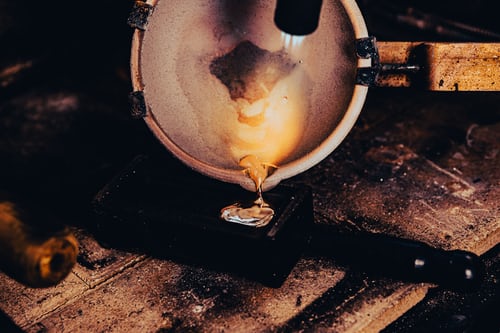
The cost of running a die casting machine is much lower than the cost of running a MIM machine.
Running costs for die casting is significantly cheaper than running costs for MIM. The running costs of a die casting machine are typically several thousand dollars. The running costs of a MIM machine can be in the tens of thousands of dollars. The running costs of a die casting machine are also much lower than the cost of a MIM machine.
The die casting machine is also much cheaper to operate. The die casting machine is more robust and less likely to have issues that require repair. The die casting machine is also likely to run longer than the MIM machine.
Metal Injection Molding vs. Die Casting: Feed Wastage
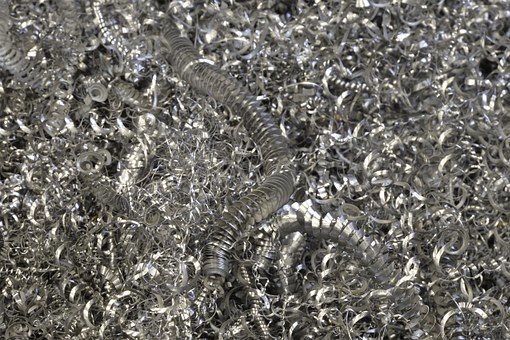
Feed waste refers to the amount of material that is wasted from the process, which is also referred to as scrap. The less feed waste in the process, the more efficient the process will be. The technology of manufacturing medical laboratory consumables is this one.
The die casting process typically has a higher amount of feed waste than the MIM process on medical device component manufacturers. The feed waste of the die casting process is typically much higher than the feed waste of the MIM process.
The MIM process consumes less metal than the die casting process. The feed waste of the MIM process is typically less than 5% of the total material. This 5% figure is typically the material that is ejected into the scrap container.
The feed waste of the MIM process is typically less than 5% because of the automated feeding system. This is possible because of the automated feeding system that is used in the MIM process. This process is typically measured in parts per million. In the MIM process, the feed waste is typically less than 1 part per million.
How to choose them for your application?
| Parameters | Metal Injection Molding(MIM) | Die casting |
| Density | 98% | 100% |
| Mechanical Strength | High | High |
| Surface Finish | High | Medium |
| Miniaturization | High | Low |
| Geometric Complexity | High | Medium |
| Design Flexibility | High | Medium |
| Thin Wall Capability | High | Medium |
| Material Ranges | High | Medium |
| Product-ability | High | Medium |
| Post-operation Feasibility | Good | Good |
| Dimensional Tolerance | High | Medium |
Conclusion
We know that the price of die casting is lower, but the price of MIM is higher. Die casting is in hundreds of thousands, the price of MIM is in tens of thousands. In addition, again, the die casting process is more stable than MIM, and the die casting process is more likely to run smoothly, but the MIM process is easier to make a small component.
This all depends on your liking and which is more suitable for you. If you need a strong component and clean surface finish, we would better choose to die casting. If you need a small component and are easy to make, we need to choose MIM.

